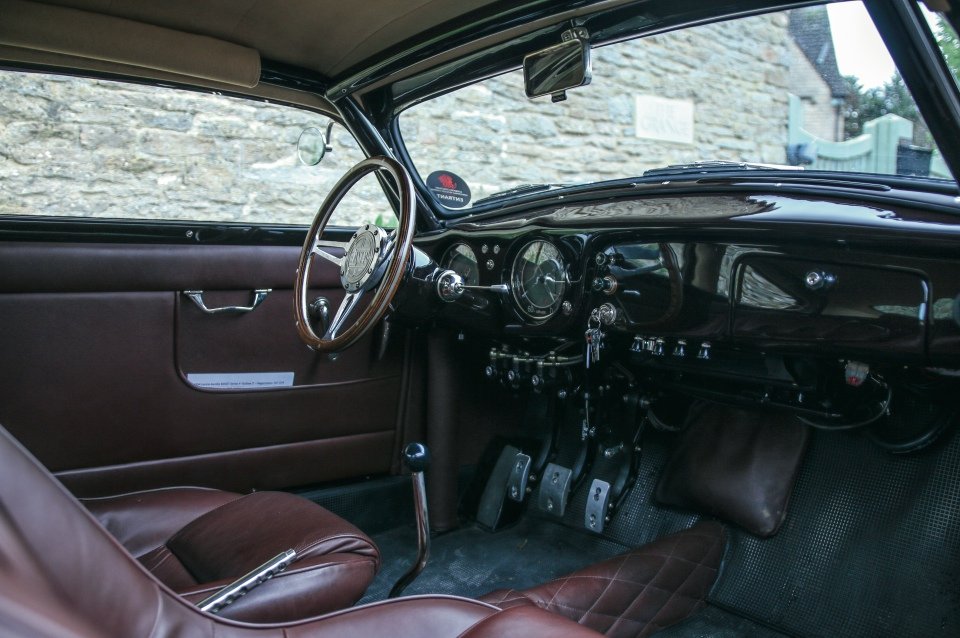The Lancia Aurelia Outlaw is a controversial classic modified with hot rod-style roof chop. Tim Pitt drives it
In the introspective, often impenetrable world of blue-chip classic cars, matching numbers are what matter. Collectors prize originality above all else, be it perfectly preserved patina or a better-than-new restoration.
Subjecting a 1950s Italian GT to a hot rod-style roof chop is thus akin to spray-painting a smirk on Botticelli’s Venus. And displaying said car at Pebble Beach Concours d’Elegance is tantamount to hanging the vandalised Venus at the Guggenheim.
“When we showed the first Outlaw, we had no idea how it would be received,” admits Simon Thornley with a wry smile. “But we were blown away by the response. Two people made orders right there, another two soon afterwards”. Simon is co-owner of Lancia specialists Thornley Kelham, and his rule-breaking Aurelia challenges purist preconceptions about classic cars. Today, I’ll be driving it.
The roots of the Fuorilegge (‘Outlaw’ in Italian) project go back to 1951, when legendary racer Giovanni Bracco drove an Aurelia B20GT to second place in the Mille Miglia and a class-win at Le Mans. Later in the car’s career, its roof was chopped down – presumably to improve aerodynamics – before it went missing somewhere in Mexico. Finally, more than half a century later, the rusting remains of Bracco’s Lancia were found in the USA, then painstakingly restored to concours standard by Thornley Kelham. The car caused a sensation, and it wasn’t long before a well-heeled Lancia enthusiast asked for something similar.
“We hesitated for about half a second before saying ‘yes’,” jokes Simon. And 5,000 man-hours later, the first Outlaw emerged. Starting with a scruffy, barn-find B20GT, the team sliced three inches from the roof pillars, widened the wings, removed the bumpers and rain gutters, and fitted Jaguar D-Type-style alloys. “The customer also wanted to pay tribute to California’s ‘Outlaw’ modified car culture,” Simon explains, hence the lightweight, less-is-more aesthetic.

The standard Aurelia was the first production car with a V6 engine, but the V6 here hails from a later Lancia Flaminia. Bored out to 2.8 litres and retro-fitted with fuel injection, plus a racier camshaft and custom exhaust, it produces 175hp – good for 0-62mph in around 10 seconds. Chassis upgrades include modern rack-and-pinion steering and disc brakes all-round, while the original sliding pillar suspension is now nitrogen charged.
Inside, the car feels like a no-frills road racer. There’s an FIA-spec rollcage, Porsche 356 Speedster bucket seats and rubber mats instead of carpets. You’ll find beauty here, though – in the gorgeous Art-Deco dials, delicate chrome door handles and long, Ferrari-style gearlever, which kinks around the transmission tunnel. Headroom is actually better than you might expect, largely because the seat bases are almost on the floor. With a letterbox windscreen and near-horizontal rear window, visibility isn’t the Outlaw’s forté.
That ceases to matter as I push the key inwards and the V6 ignites with a brusque bark. It sounds raw and uncouth, the gargling growl of six throttle bodies punctuated by rasps from the twin tailpipes. Acceleration is merely swift by modern standards, but keen throttle response and healthy appetite for revs encourage you to harness every last horsepower. Beyond 3,500rpm, the engine comes alive, its guttural roar bouncing off limestone walls as I drive deep into the Cotswolds.
The Outlaw isn’t a car for kid gloves. Its unassisted steering needs a firm hand, while the four-speed gearbox requires a robust shove. Get into a rhythm, though, and it’s meticulous, malleable and wonderfully mechanical. The chassis feels balanced and confidence-inspiring, encouraging you to lean on the car in corners and steer with your right foot. Whatever your thoughts on the modifications, I’d defy anyone not to enjoy driving it.
Ultimately, ‘restomods’ like this may never be fully accepted on the manicured lawns of Pebble Beach. But that’s kind of the point. The Aurelia Outlaw – and the outlaw scene in general – is about doing things differently: building cars for driving, rather than simply as static works of art. I’m certain Giovanni Bracco would approve.
Tim Pitt works for motoringresearch.com